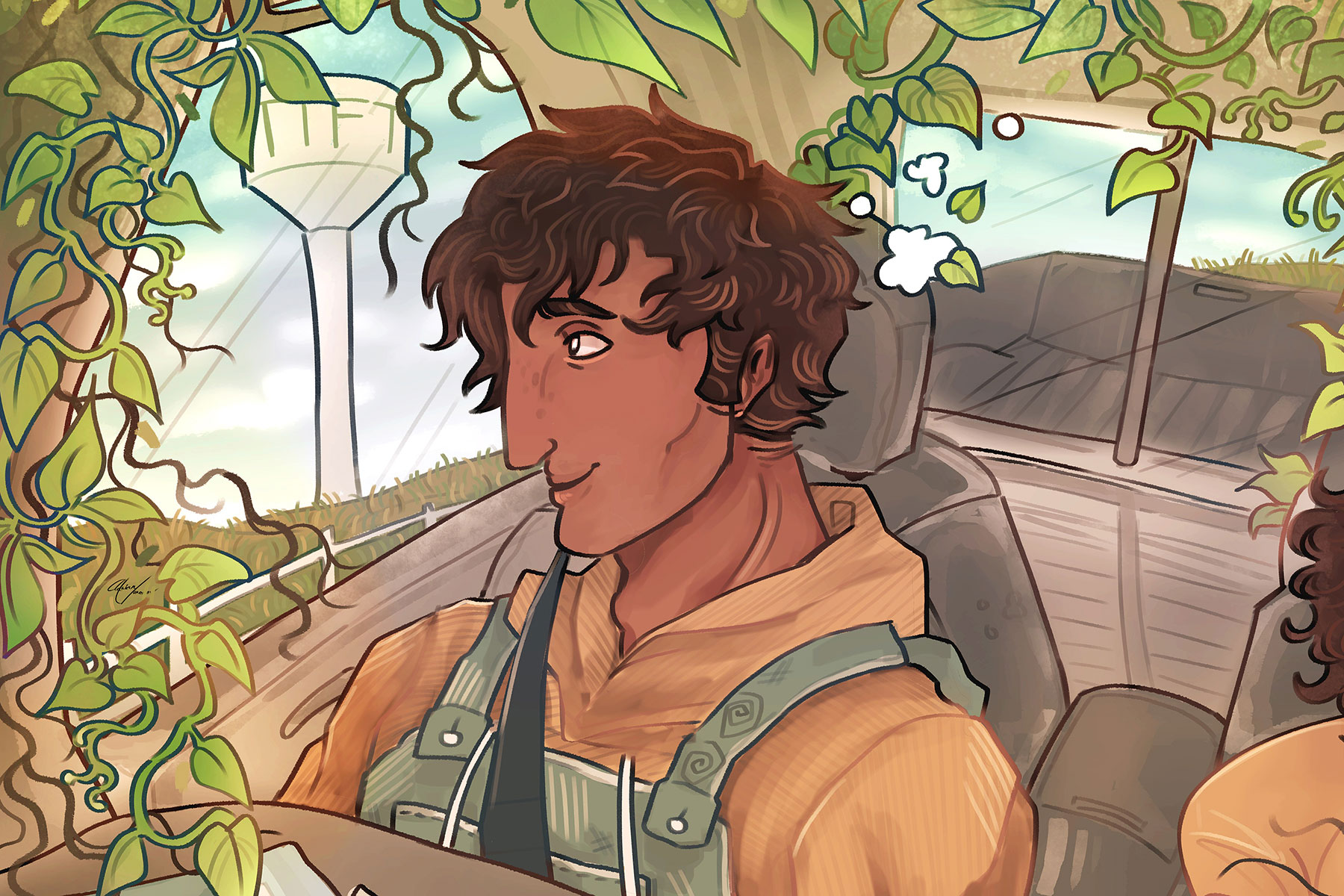Boll weevils don’t bother Georgia cotton anymore. But farmers
still have to battle
insects. In fact, University of Georgia scientists say bugs have
already taken a big bite
out of this year’s cotton harvest.
“It’s still too early to tell how much we’ve lost to insect
damage,” Phillip Roberts said.
“We’ve probably lost more than in the past few years.”
Roberts, an Extension Service entomologist on the Tifton, Ga.,
campus of the UGA
College of Agricultural and Environmental Sciences, said cotton
crop losses are hard to
estimate now. The Georgia harvest won’t start until mid- to late
September.
“It’s easier to assess the money farmers have spent trying to
prevent loss,” Roberts
said. “On average, they’ve sprayed non-Bt cotton four-and-a-half
to five times. And
they’ve sprayed Bt cotton one to one-and-a-half times.” The
number of sprays varies
from field to field, ranging from none to 10.
Bt cotton is a type genetically engineered to contain a
bacterium, Bacillus thuringiensis,
that attacks bollworms. Georgia farmers planted Bt cotton in
nearly 40 percent of their
1.44 million cotton acres.
Pesticide sprays cost about $9 per acre. Going into the last
week of August, they had
cost Georgia cotton growers $41 million to $47.5 million.
The main cotton pests have been corn earworms, tobacco budworms
and fall
armyworms. Farmers have long lumped the first two together,
calling them bollworms.
But in the past two summers, they’ve had more problems with corn
earworms than in
the previous several years.
Bt cotton doesn’t control corn earworms as well as it does
tobacco budworms. It has
little effect on fall army worms.
“And we’ve had the worst fall armyworm outbreak we’ve had in
several years,” said
David Jones, an extension entomologist in Statesboro, Ga.
Roberts and Jones both say they’ve seen a troublesome change in
corn earworms’
behavior this year. In a sense, they’re getting smarter.
“We’re finding the moths laying eggs lower in the plant canopy,”
Roberts said. “That
has been happening for years and years, but the frequency is
increasing.” Caterpillars
low in the plants are harder to kill, since pesticides are
sprayed over the top.
Farmers control insects with a system called integrated pest
management. IPM scouts
check fields often for insect pests. Only when the pests reach a
certain population will
farmers spray cotton fields with a pesticide.
“We’ve had a tough insect year,” Roberts said. “We’ve still got
a quality cotton crop.
But we’ve had to spend more money on it.”
How bad has it been? “Several of the leading chemical companies’
pyrethroid
insecticides are sold out,” Jones said.
Heading into the last week of August, “egg counts shot up
tremendously,” said Jones,
who works mainly in east Georgia. “We were seeing egg counts of
100 in many fields.
In other words, if a scout checked 100 plants, he’d find 100
eggs on them.”
Jones urged farmers to check their fields closely. “We still
have extreme insect pressure
in some fields,” he said. “And we don’t have much longer to make
cotton.”
In most of the state, he said, the bollworm and fall armyworm
cycles are winding
down. But populations in some fields are still high. And farmers
still have a potential
problem with soybean loopers, which feed on cotton foliage in
late August and early
September.
Stinkbugs, he said, are damaging cotton, too. He tells scouts to
check closely for them
by shaking the plants over a dropcloth spread between the
rows.
“Stinkbugs are an unseen pest,” Jones said. “They suck the
juices out of the seeds
inside the bolls. They cause damage now, but you don’t see it
until later.”




